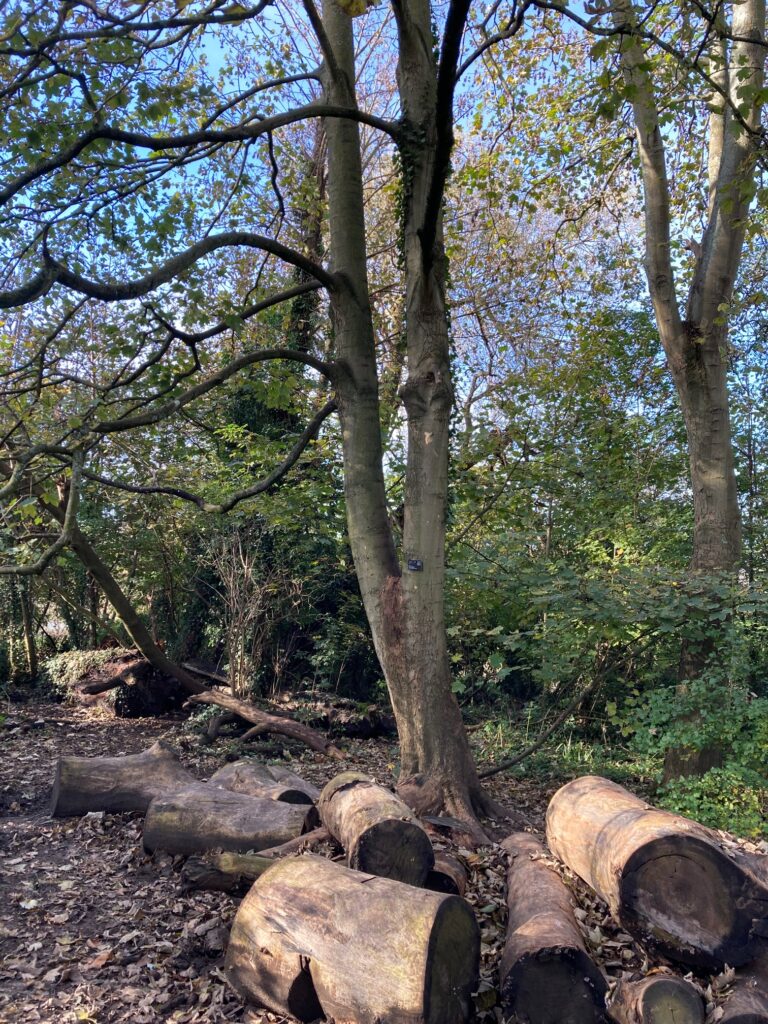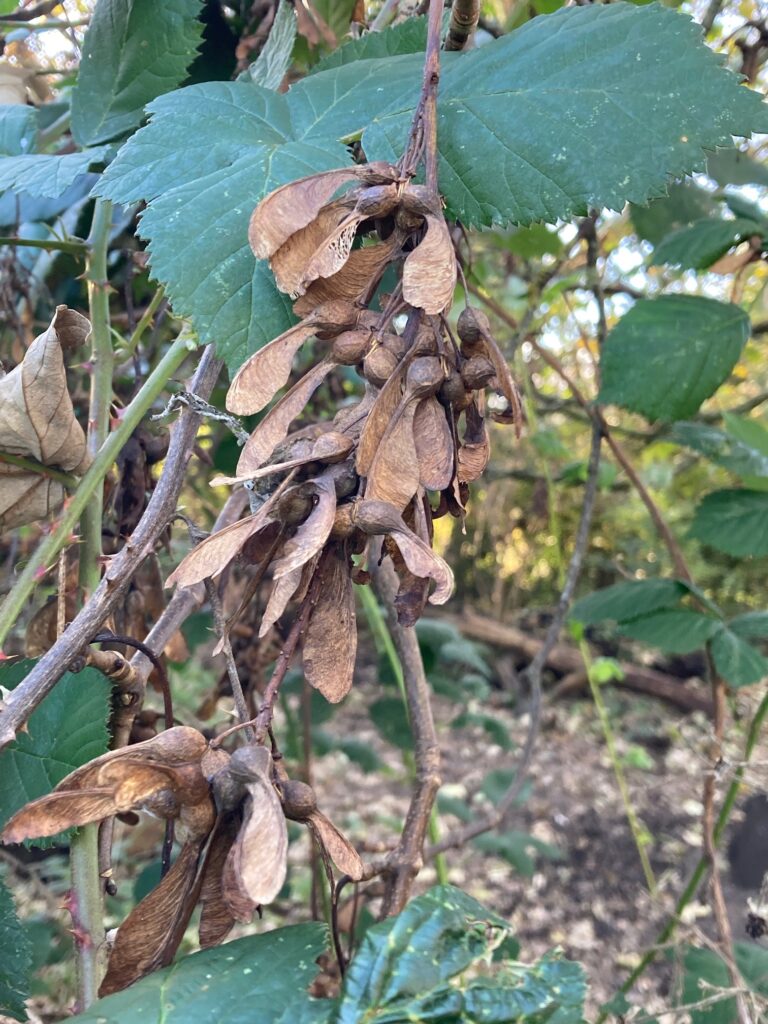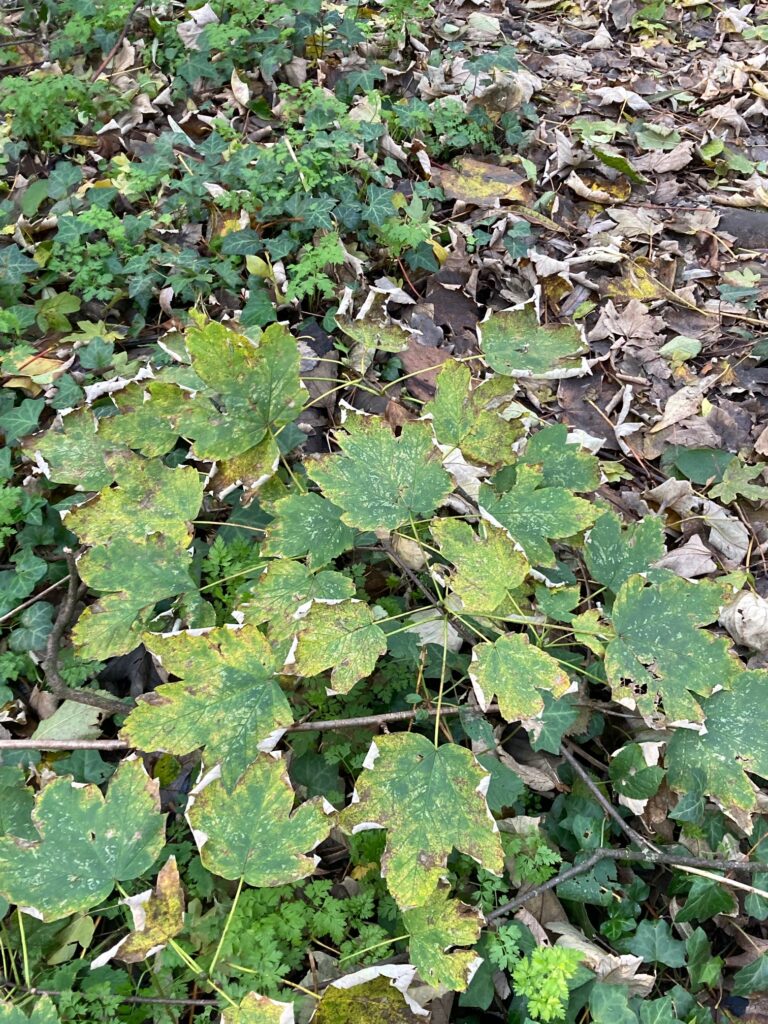What3Words reference: pops.shell.venues
Location notes: by log pile on river side of path opposite football pitches
These broadleaf deciduous trees can grow to 35m and live for 400 years. Mature trees are very tolerant of wind and pollution. The bark is dark pink-grey, and smooth when young, but becomes cracked with age.
The flowers are small, green-yellow and hang down in spikes called ‘racemes’. After pollination by wind and insects, female flowers develop into distinctive winged fruits known as samaras. These fruits are in pairs, not stretched out like a pair of glider wings but V shaped which spin in the wind like helicopter blades,
It is not a native tree but is thought to have been introduced either by the Romans or the Tudors.
Sycamore is attractive to aphids and their predators, such as ladybirds, hoverflies and birds. The leaves are eaten by caterpillars of a number of moths and the flowers provide a good source of pollen and nectar for bees and other insects. The seeds are eaten by birds and small mammals.
The timber is hard, pale and fine grained and so good for carving and making furniture and kitchenware handles as it does not stain or taint food. No wonder it was used in Wales for making ‘love spoons’.
Click Tree Trail to return to the full list




